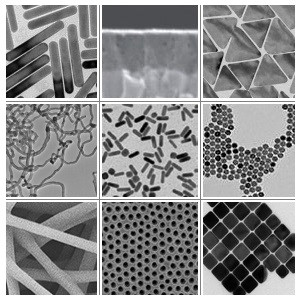In the first step, the new database contains definitions and statistics about different nanomaterials and morphologies divided into two major categories according to ISO/TS 80004-1: 2010: Nano-objects and Nanostructures.
Nano-object category contains one-dimensional nanomaterials (e.g., nanocoating, nanofilm, and graphene), two-dimensional nanomaterials (e.g., nanorods, nanofibers, nanowires, nanotubes, and quantum wires), and three-dimensional nanomaterials (e.g., nanoparticles, nanostars, nanoshells, nanopores, nanohorns, nanospheres, dendrimers, fullerene, and quantum dots). Such nanomaterials as aerogels, nanofluidics, nanocomposites, nanocolloids, and nanofoams fall into nano-structures category.
The primary mission of this database is to gather, analyze, and publish information about nanomaterials which are reported in scientific and commercial fields. Statnano considers the definition and image of any nanomaterial according to authentic standards, distinguished books, and highly cited papers. A wide spectrum of indicators such as average citation per nano-article, h-index of nano-articles, ISI indexed nano-articles, total number of citations to nano-articles and number of patents are provided for every single nanomaterial.
By August 2017, this database collected 43 nanomaterials which were reported in 1522685 ISI articles, 50698 patents, and 6918 consumer products. The database is comprised mainly of three-dimensional nanomaterials (35 percent). One- and two-dimensional nanomaterials comprise 23 and 14 percent of the database, respectively. Nanoparticles, nanotubes, nanocrystalline materials, nanocomposites, and graphene are the most common nanomaterials monitored by Statnano. Here you can find more about this database.


